Acer Aspire V15 (V3-575G) review – the same elegant V15, but with the new Skylake CPU running the show

Not long ago we reviewed the Aspire V15 (V3-574G) and we were pretty satisfied with the overall performance of the system. The design was on par with other competitors in the same segment as well. Shortly after, Acer released its first refreshed models that have slightly different appearance (hardly noticeable, though) and integrate the new Core i7-6500U CPU, a Skylake successor to the Core i7-5500U.
Interestingly, we got the refreshed model, but with a TN panel instead of an IPS without any price adjustments. The previous V3-574 with Core i7-5500U model with IPS actually sells for a bit less than the newer Core i7-6500U configuration with TN panel. Despite the image quality decline in terms of viewing angles and contrast, the TN panel stands as a more energy efficient solution and we will see if that translates into better battery life. Also, the TN screen is “Color Blast” branded, so we expect the promised 100% sRGB color gamut coverage which V3-574 failed to deliver.
You can browse through the available configurations on Amazon.com.
Contents
Retail package
The notebook came with the bare minimum for a retail box. The usual service manuals, AC adapter, and charging cable are included as well as the notebook itself.
Design and construction
In this section, the Aspire V15 offers little improvement (in our opinion). The overhaul is rather visual and may appeal to some, but to others – not so much – it depends on whether you prefer a more metallic look or darker tones. However, every other detail, curve, edge etc. remains the same as the previous generation.
The lid is just about the same as the one we saw in the earlier model – a nanoimprint lithography process is used for the making of the unique pattern on the back of the notebook. The brushed aluminum provides a more sophisticated feel. Still, the hinges appear to be a bit too tight as it’s impossible to lift the lid with one hand. The bottom piece of the notebook remains unchanged too – several vents for extra airflow that can be paired with an external cooling pad and lots and lots of screws keeping it in place.
As for the sides, they adopt the same design we already saw in the V3-574G. The left side accommodates the main exhaust vent, VGA port, LAN, HDMI and two USB 3.0 ports, while the right has the usual USB 2.0 port, optical drive and DC charging port.
Moving on with the interior, we are presented with the cool LED backlit keyboard and huge touchpad. Again we are happy with the keyboard that has reasonably-sized keys with long-travel tactile feedback and little curves that contribute to a more pleasant typing experience. Nonetheless, the media player buttons and volume keys are too far from the “Fn” key so changing the song or lowering the volume is virtually impossible to do one-handed. It’s not a major drawback, but it’s a small reminder that even the tiny details do matter.
This brings us to our next stop – the touchpad. It’s quite big, actually (106 x 78 mm), leaving more space to work with, which is also an advantage when using gestures.
And finally the interior as a whole. Plastic is once again used for the piece around the keyboard, successfully imitating brushed aluminum without attracting smudges and fingerprints. It has been changed to a darker gray tone compared to the last generation, giving it slightly more stern appearance. Sadly, while it looks like aluminum, the plastic isn’t as sturdy and bends a little when pressure is applied.
Aspire V15 (V3-575G) features great design, good choice of materials, keeps the weight low (2.4 kg) and the profile thin enough (27.94 mm). It kind of flirts with the notion of less-than-robust construction, but this applies only to some areas. Still, for the given price point, we’re satisfied with the overall build.
Disassembly and upgrade options
There’s no service cover and if you need to perform an upgrade or replace the 2.5-inch drive, you will have to detach the bottom cover. However, that’s fairly easy to do. You can read the full disassembly article. Your only upgrade options are the 2.5-inch drive and the optical drive. The latter can be replaced with another 2.5-inch HDD using a bracket.
Display and sound
As we mentioned earlier, the notebook now uses a TN panel with WLED backlight,model number N156HGE-EAL manufactured by INNOLUX. It has a 15.6-inch diagonal packing Full HD (1920×1080) resolution with 0.18 x 0.18 mm pixel pitch, or 141 ppi. It can be considered “Retina” if viewed from a distance equal to or greater than 61 cm.
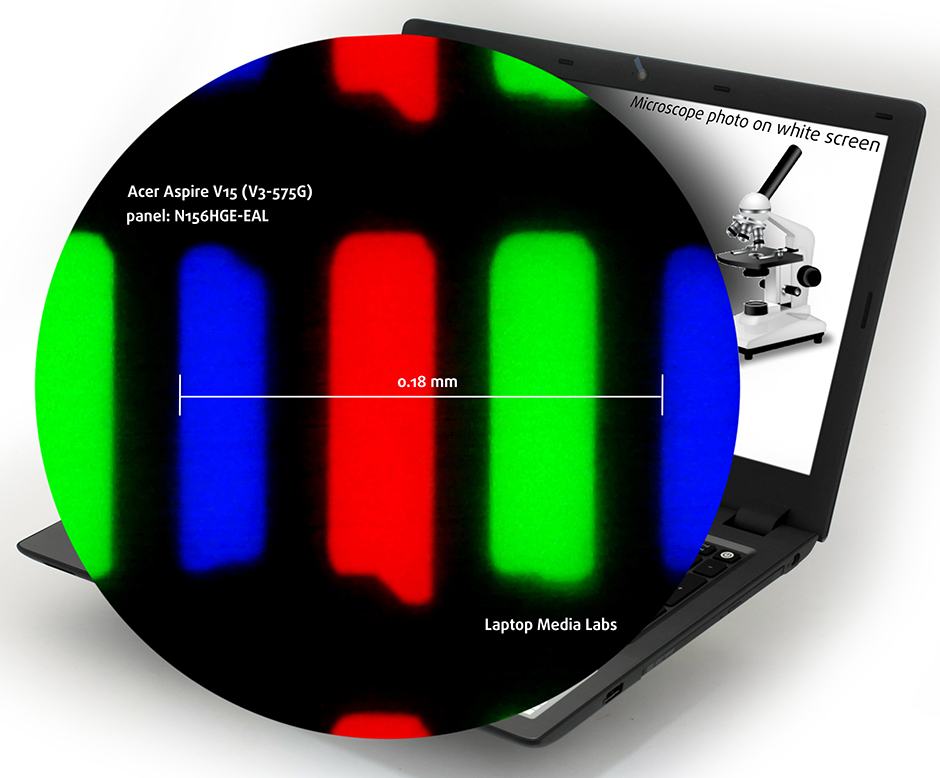
Due to the TN panel used for the display, the viewing angles aren’t all that good at a 45-degree incline.

The maximum recorded brightness is a bit low – 233 cd/m2 with a maximum deviation of 12%. Also, the average color temperature is 7065K, which is a bit colder than the optimal 6500K. There are no serious deviations.
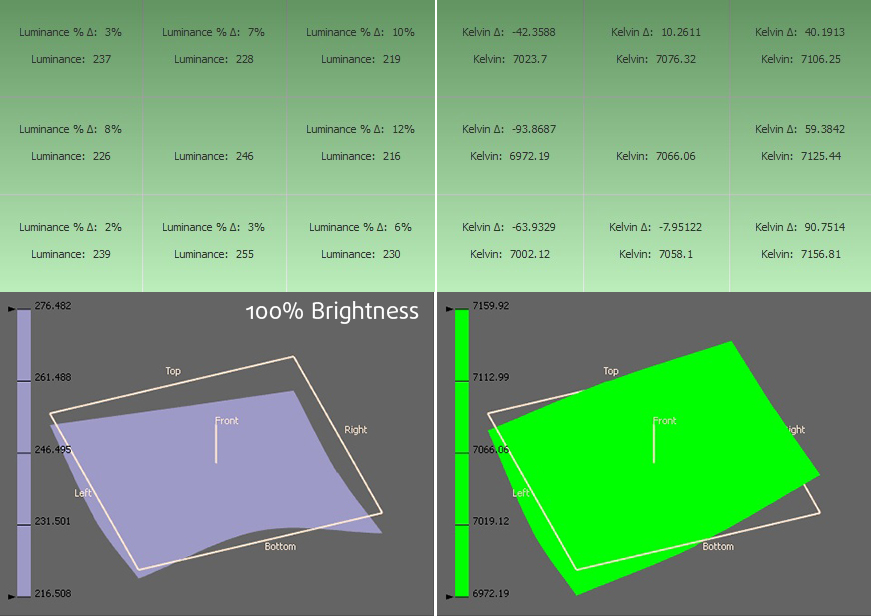
Color reproduction
To make sure we are on the same page, let’s have a little introduction into the sRGB and Adobe RGB color gamuts. The CIE 1976 Uniform Chromaticity Diagram represents the spectrum of colors visible to the human eye, thus giving you a better perception of color gamut coverage and color accuracy. Inside the black triangle, you will see the standard color gamut (sRGB), used by millions of people in HDTV and on the Web. As for Adobe RGB, it is used to work with professional cameras and monitors when preparing print. Basically, colors inside the black triangle are used by everyone, and so reproducing them accurately is key in a quality display.
And here’s where the so-called ColorBlast technology comes into play. Our testing shows that the display can reproduce 100% of the sRGB color gamut. This ensures vivid colors.

The image below is practically the same as the one above, but this time, you can see the colors that have 100% and 50% saturation, as well as the reference colors on the white dots.
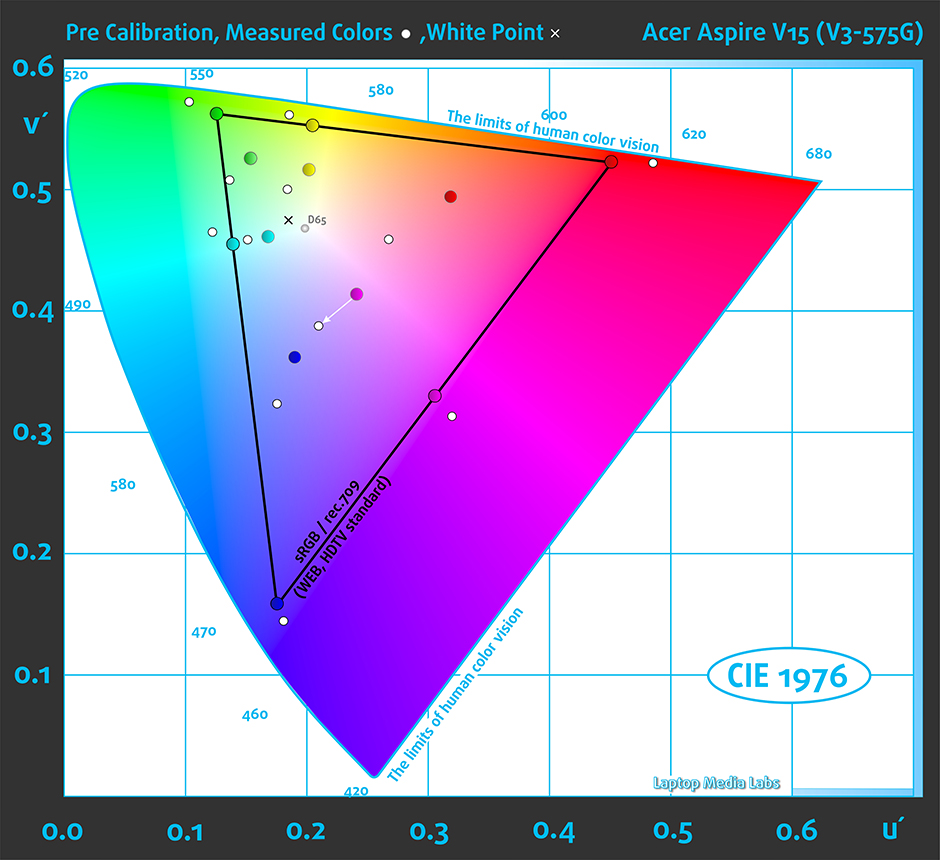
We tuned the display at 140 cd/m2 brightness and 6500K color temperature.
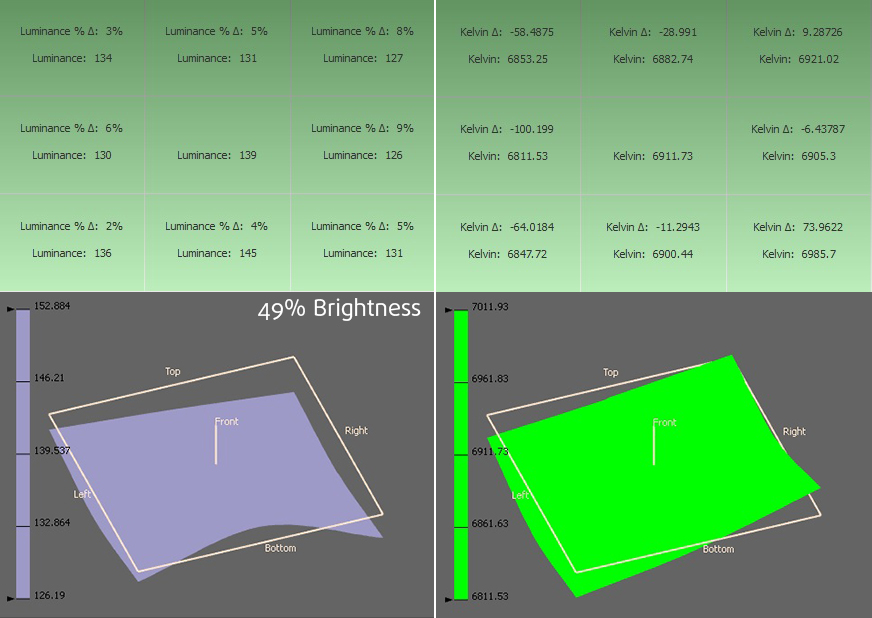
We used X-Rite i1Display Pro for calibration.
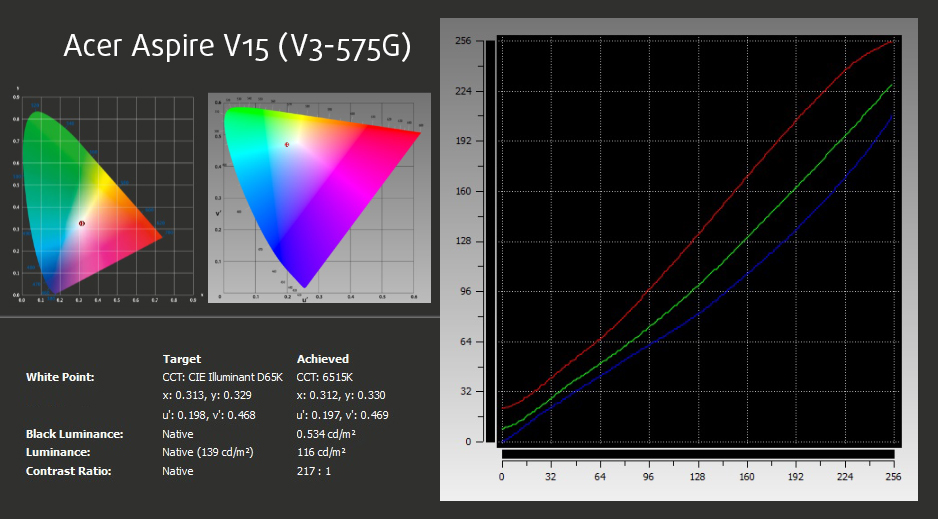
We tested the display using 24 commonly used sample colors like skin tones, grass, blue sky, orange etc. The average DeltaE after calibration is low – 0.91. The contrast ratio, however, is really low – 320:1 before and 220:1 after calibration.
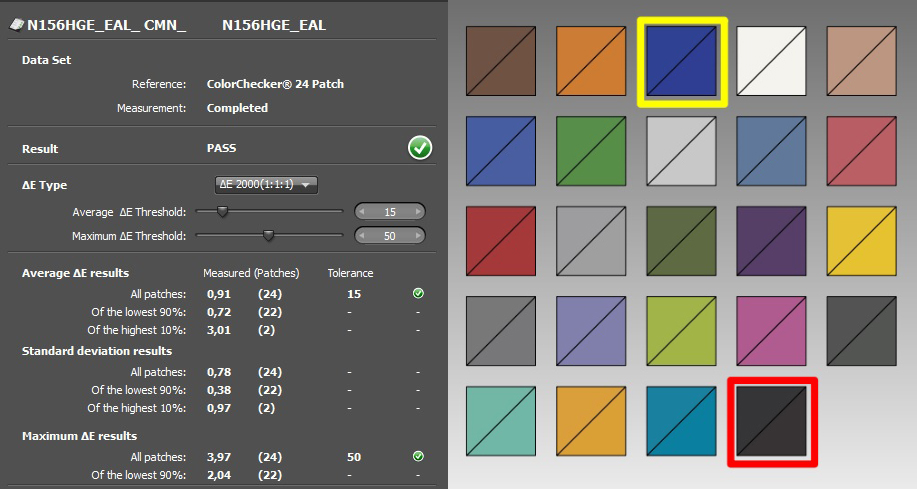
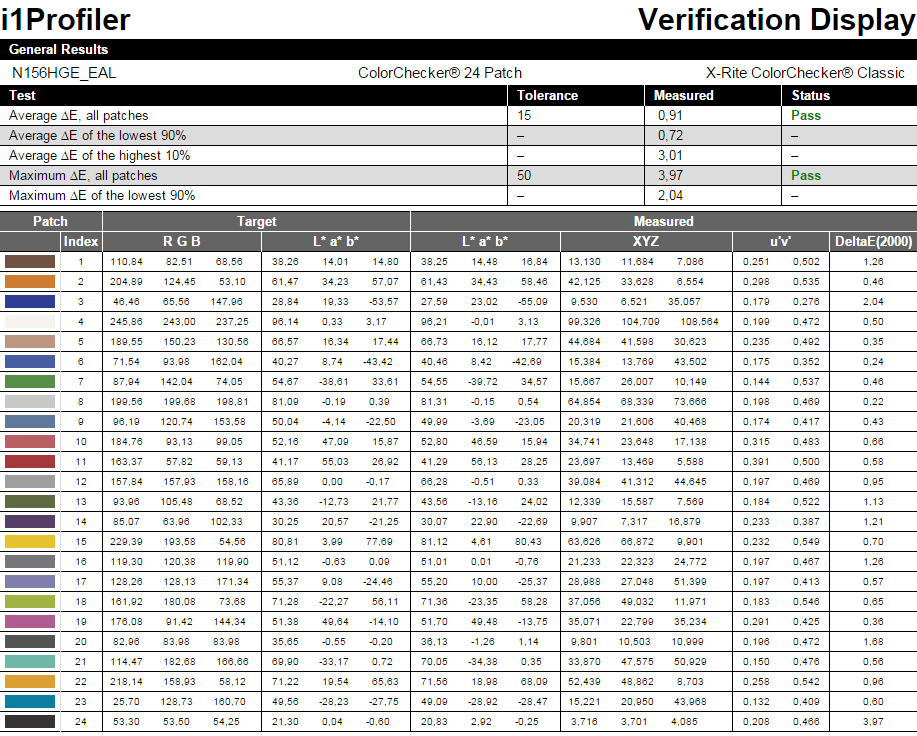
Other colors that we’ve tested.
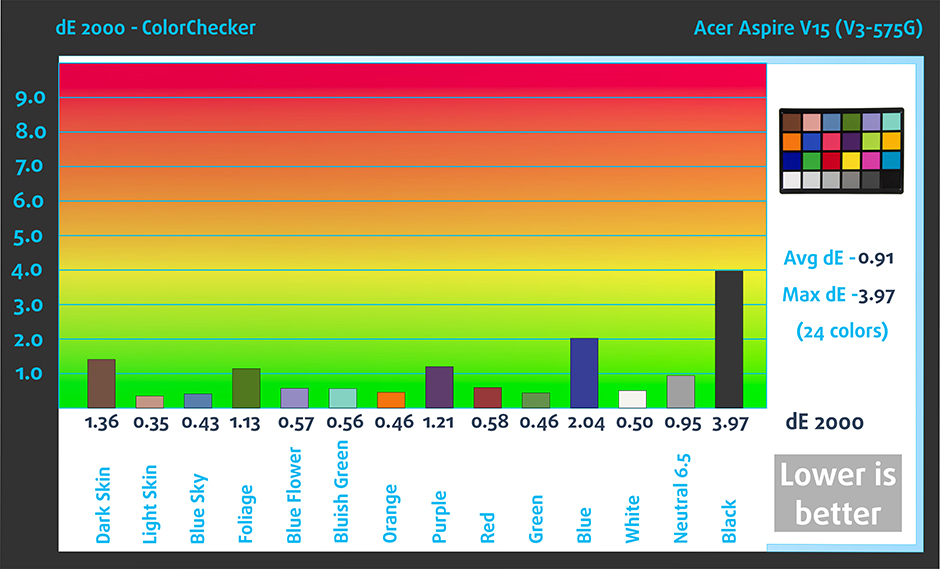
Pulse-width modulation (PWM, Screen flickering)
Unfortunately, the display uses PWM across all brightness levels (except for 100%) for screen dimming. The frequency of the light emissions is 1 kHz, but compared to some other displays with 200 Hz, which is considered as “aggressive” pulsation, it’s considerably better.
Conclusion
It’s still unclear to us why exactly Acer moved from from an IPS-equipped, Broadwell CPU-based model to the TN panel in this model. Whatever the reason, picture quality has declined as a result. Viewing angles aren’t comfortable, the contrast ratio is really low and the relatively low maximum brightness could obstruct normal usage under direct sunlight. Moreover, the panel uses PWM for regulating brightness with fairly low frequency – 1 kHz (higher freqs are preferable). The only considerable advantage is the full sRGB gamut coverage. We have nice things to say about about the color accuracy of 0.91 Delta E that we managed to record after calibration. Values below 1.00 are indistinguishable to the human eye.
There’s one thing we haven’t covered – the essential BluelightShield technology that reduces the blue light emissions, which are linked to several macula diseases. You can read a bit more about the technology that’s inherited from the V3-574.
Sound
The notebook boasts stereo loudspeakers that support Dolby Digital Plus technology for clearer and fuller sound. Our tests show pretty good sound quality, but there are some slight distortions at higher frequencies. The maximum loudness is pretty high and there’s additional multi-purpose equalizer software that gives you various presets – music, movie, games etc.
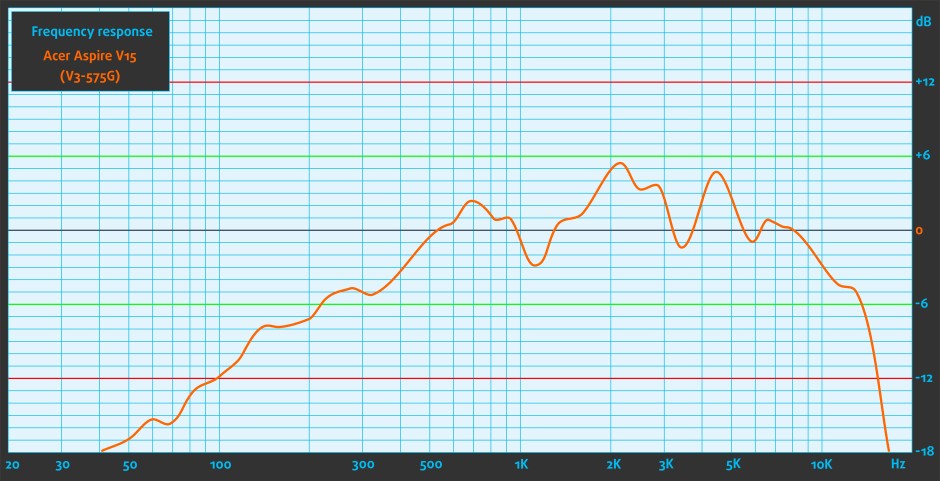
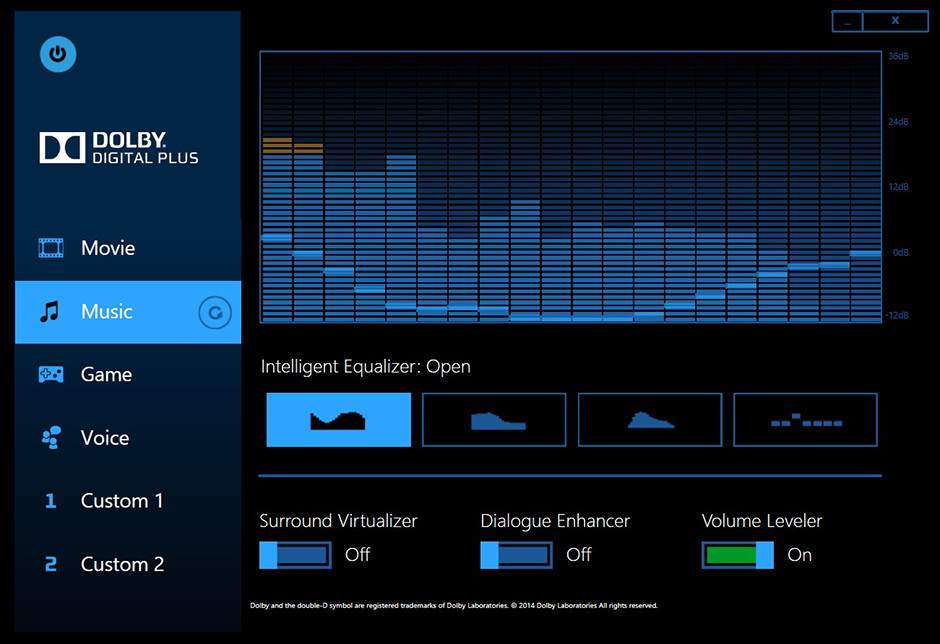
Specs sheet
The current specs sheet refers to this particular model – configurations may differ depending on your region.
| CPU | Intel Core i7-6500U (2-core, 2.50 – 3.10 GHz, 4MB cache) |
|---|---|
| RAM | 8GB (1x 8192MB) – DDR3, 1600MHz |
| GPU | NVIDIA GeForce 940M (4GB DDR3) |
| Storage | 1TB 5400 rpm |
| Display | 15.6-inch (39.62 cm) – 1920×1080 (Full HD) TN, matte |
| Optical drive | DVD |
| Connectivity | LAN 10/100/1000 Mbps, Wi-Fi 802.11ac, Bluetooth 4.0 |
| Features |
|
| Battery | 4-cell, 37Wh (2000) mAh |
| Thickness | 27.94 mm (1.1″) |
| Weight | 2.39 kg (5.29 lbs) |
Software
We used a clean install of Windows 10 (64-bit) for the purposes of of this review and you can download the latest drivers from Acer’s official website if you wish to perform one yourself.
Battery
The notebook features a relatively small 37Wh battery, the same one as in the previous model (V3-574). This time around, though, there’s a TN panel that consumes less energy and a presumably more energy efficient Skylake CPU. However, the results aren’t all that promising. When it comes to Wi-Fi, the device did considerably better than its predecessor, but movie playback and gaming runtimes weren’t any better.
We did our tests using the same settings as always – power saver on, screen brightness set to 120 cd/m2 and Wi-Fi switched on.
Web Surfing
As usual, we start with the Web browsing test, which uses a custom script to automatically load various popular pages.
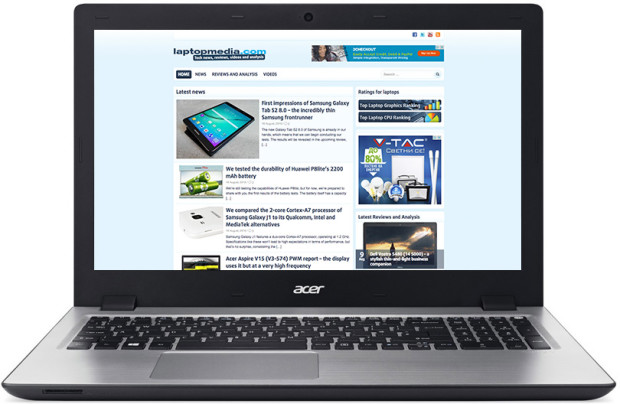
Considerably better than its predecessor – 310 minutes (5 hours and 10 minutes) – enough time to work a bit on-the-go.
Video Playback
For our Video playback test we use a 720p HD movie.
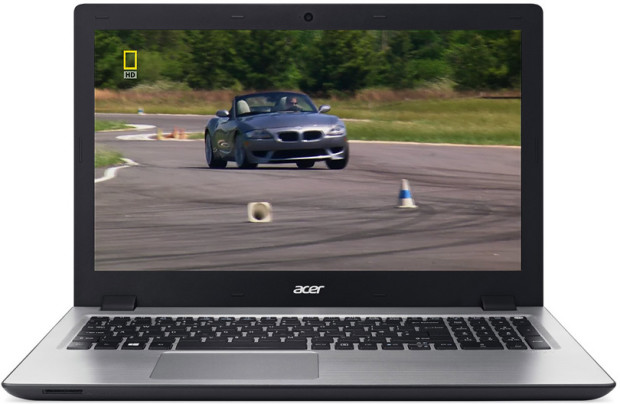
Surprisingly, slightly lower result than its predecessor – 237 minutes (3 hours and 57 minutes) of battery life, so we can’t complain much here.
3D Gaming
To achieve accurate simulation, we used the Metro Last Light benchmark running on a loop with graphics set to minimum.
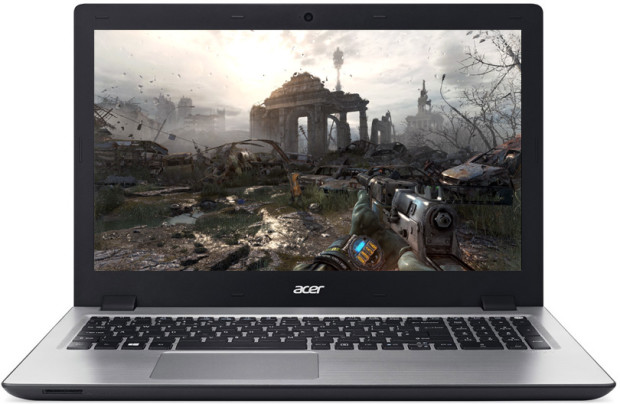
The runtime here is pretty low – 66 minutes (1 hour and 6 minutes), but it’s quite unlikely that you will start gaming away from the power source.
CPU
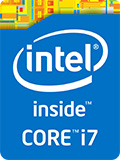 Intel Core i7-6500U is part of the Skylake generation of processors and it’s positioned in the the ULV lineup (ultra-low voltage), with a 14nm FinFET manufacturing process. It has two cores that support Hyper-Threading technology, resulting in up to 4 threads. The chip is a direct successor to the Core i7-5500U Broadwell CPU – expecting slightly better performance with emphasis on the power efficiency features.
Intel Core i7-6500U is part of the Skylake generation of processors and it’s positioned in the the ULV lineup (ultra-low voltage), with a 14nm FinFET manufacturing process. It has two cores that support Hyper-Threading technology, resulting in up to 4 threads. The chip is a direct successor to the Core i7-5500U Broadwell CPU – expecting slightly better performance with emphasis on the power efficiency features.
The CPU is clocked at 2.5 GHz and can go up to 3.1 GHz for one active core or 3.0 GHz for two active cores. Also, the silicon includes an Intel HD Graphics 520 iGPU that sports 24 Execution Units ticking at 300 MHz and can go up to 1.05 GHz. The whole SoC supports DDR4-2133/DDR3L-1600 memory in a dual-channel array. So the whole chip is rated at 15W TDP including the memory controller and the integrated graphics, thus making it suitable for 11-inch notebooks or bigger. It also supports the cTDP down feature and the OEM can lower the TDP to 7.5W.
You can browse through our top CPUs ranking: http://laptopmedia.com/top-laptop-cpu-ranking/
Here you will find other useful information and every notebook with this processor that we’ve tested: http://laptopmedia.com/processor/intel-core-i7-6500u/
Results are from our Photoshop benchmark test (the lower the score, the better)
Results are from the Fritz chess benchmark (the higher the score, the better)
Fritz
Fritz is a chess benchmark that tests the computing capabilities of the CPU with various chess moves. The Intel Core i7-6500U reached 5.984 million moves per second. By comparison, one of the most powerful chess computers ever, Deep(er) Blue, was able to squeeze out 200 million moves per second. In 1997 Deep(er) Blue even beat the famous Garry Kasparov with 3.5 to 2.5.
GPU
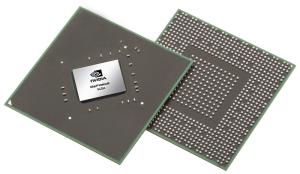 The GeForce 940M is a direct successor to last year’s 840M and it’s placed in the mid-range class. It is commonly used as a multimedia GPU and light gaming. It’s very similar to its predecessor GeForce 840M, but it’s clocked slightly higher. GeForce 940M is Maxwell-based and uses GM108 chip.
The GeForce 940M is a direct successor to last year’s 840M and it’s placed in the mid-range class. It is commonly used as a multimedia GPU and light gaming. It’s very similar to its predecessor GeForce 840M, but it’s clocked slightly higher. GeForce 940M is Maxwell-based and uses GM108 chip.
NVIDIA GeForce 940M is built by means of a 28nm manufacturing process and has 384 shader units, 24 TMUs and 8 ROPs (64-bit interface). It can be found in modifications with 2GB or 4GB DDR3 memory.
940M’s TDP is 33 watts and is mostly used in mainstream laptops. It supports GPU Boost 2.0, Optimus, PhysX, CUDA and GeForce Experience.
You can browse through our GPU ranking to see where the Intel HD Graphics (Broadwell) stands: http://laptopmedia.com/top-laptop-graphics-ranking/
For more information about the GPU, check out link: http://laptopmedia.com/video-card/nvidia-geforce-940m-4gb-ddr3/
Results are from the 3DMark: Fire Strike (Graphics) benchmark (higher the score, the better)
Temperatures
Even though this test isn’t a good representation of a real-life usage, we run these tests to determine the stability of the system and to see how the cooling design handles higher temperatures and load.
We started off with 100% CPU load for an hour and the silicon didn’t dip below 2.9 GHz, which is still a good result when you take into account that the CPU’s Turbo Boost frequency is 3.0 GHz with two active cores. Moreover, the chip kept far away from the maximum operating temperature – we got 65 °C under heavy load and under 29 °C when idle. Here you can see the lines that represent the temperature (red) and CPU load (green).
Once an hour had passed, we turned on the GPU stress test as well. Nevertheless, things didn’t change much. The CPU was still running at 2.9 GHz, but the temperature rose to around 87 °C. The GPU, on the other hand, reached relatively high temperatures – 79-80 °C but didn’t show any signs of throttling. We are satisfied with the cooling design for sure.
The outer temperatures, however, were a bit high. You can see that the center of the keyboard gets pretty warm, but don’t take that as a sign of warning. The test we conducted consists of more than two hours of continuous workload and the machine is quite unlikely to reach such high temperatures under normal usage. Also, this isn’t a gaming notebook, so you don’t need to worry about excessive heat.
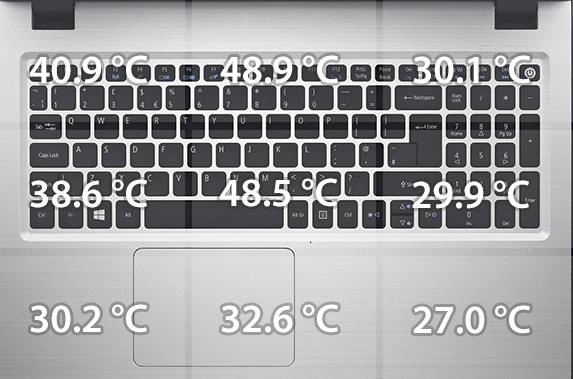
Verdict
At the end of the day, the latest generation Aspire V15 keeps what’s good from the Broadwell variant, but also misses big-time with the screen. The notebook can be found for around €800, offering relatively powerful and capable hardware with great keyboard and touchpad experience. However, the previous V3-574 generation offered better screen quality, and if you are able to find the Broadwell version, it sells for a little more than €700. So basically, you get better image quality and mostly the same performance for a bit less money. Yes, V3-575’s screen has 100% SRGB color gamut coverage and we had better web surfing runtimes because of that, but some of the screen properties like the narrow viewing angles, lower contrast ratio and PWM across 0-99% brightness levels somewhat detract from the positive experience with the notebook.
In any case, the laptop still stands as a great solution for the average user, especially when you consider the price tag. On the other hand, if you are searching for more of a multimedia-oriented solution, the V3-574G variant that we reviewed a few months back might be the way to go. Moreover, the cooling system proved to be pretty effective and you will not have any problems with overheating or CPU and GPU throttling.
You can browse through the available configurations on Amazon.com.
Pros
- Unique nanoimprint design
- Great keyboard and touchpad experience
- Effective and silent cooling system – handles heavy workloads in extreme conditions
- The panel offers 100% sRGB color gamut coverage and high color accuracy
- Good battery life
- BluelightShield technology that reduces the negative effect of blue light emissions
Cons
- TN panel is used instead of IPS resulting in lower viewing angles
- PWM across all brightness levels (except 100%)
- Costs more than its predecessor
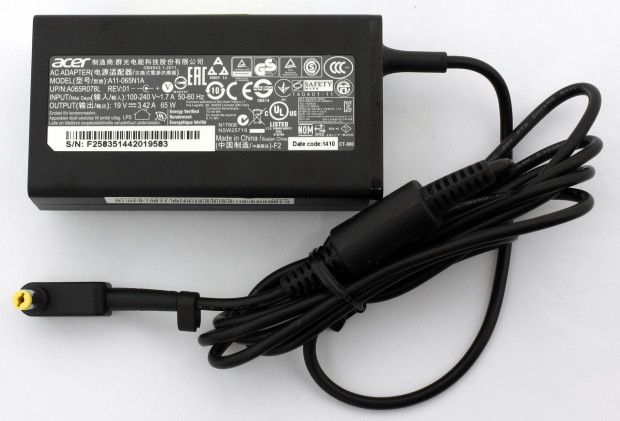
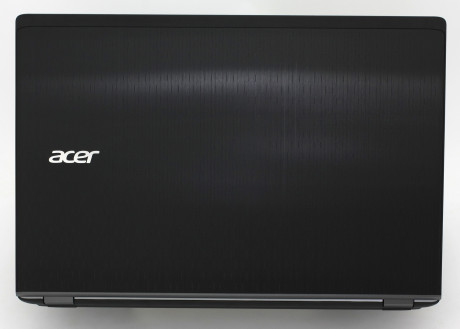
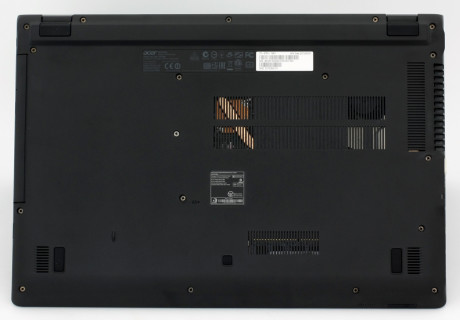
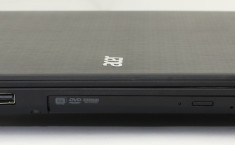
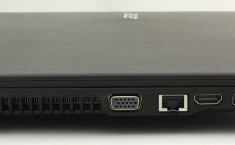
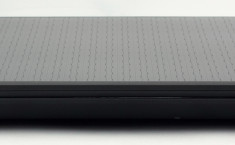
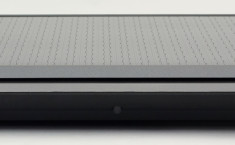
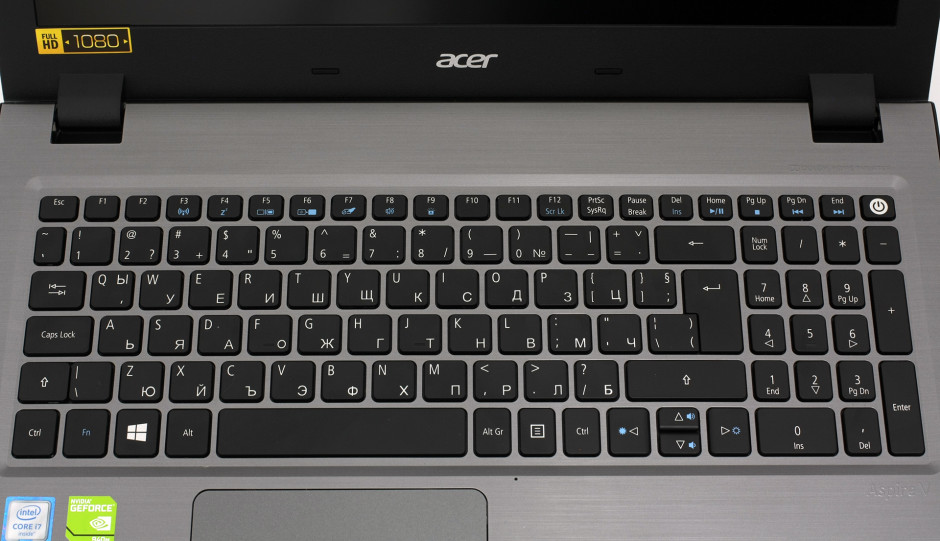
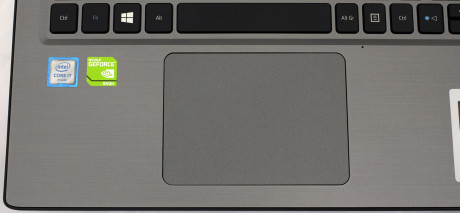
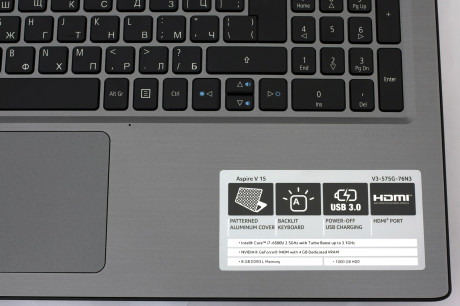
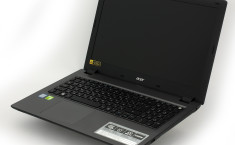
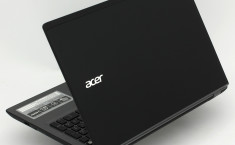


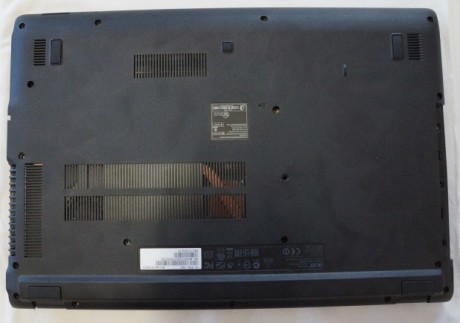


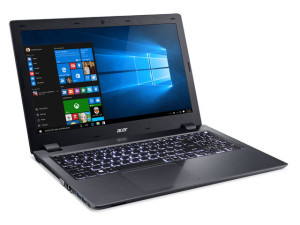


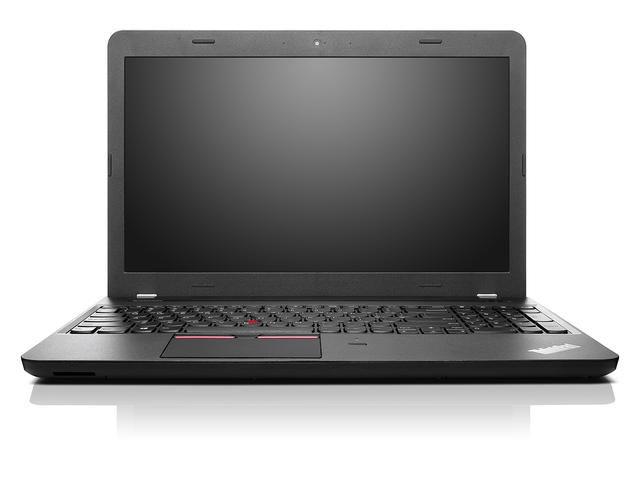
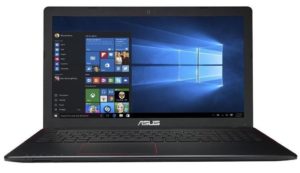
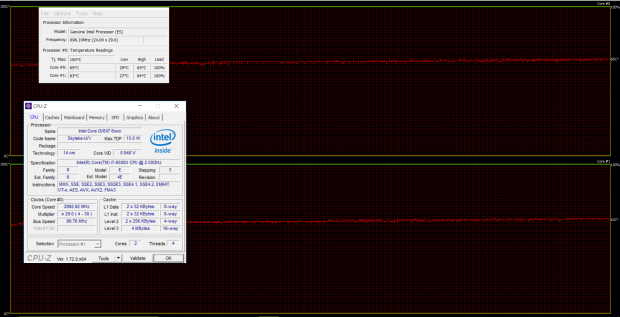









Hi.. Very thorough review of the laptop. This site has been useful for many laptop buyers.
I have a question. I have to purchase a new laptoo.1 with full HD ips display with i5-5200u and another with full HD TN display with i7-6500u.
Everything else is same.
Which one should i buy ? I am going to use it mainly for coding , watching movies and lots of web surfing.
Will i7 will speed up things for my desired tasks ? Or i5 will be more than enough
Thanks a lot for review!
Hi ..i was wondering, will this product would carry heavy load cad files and lumion rendering??
im wondering can this product carry heavy load cad files?